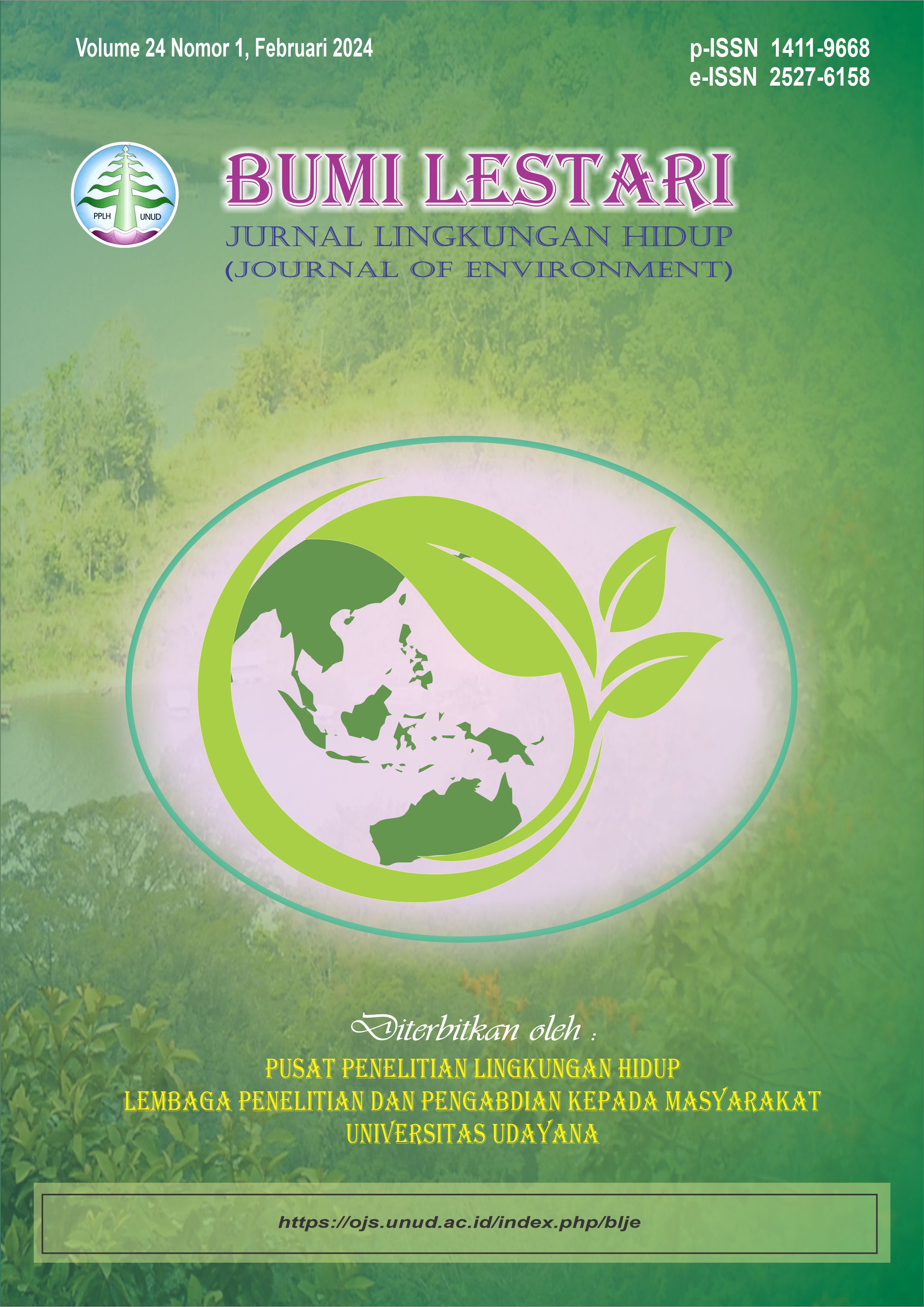Penempelan Teritip (Arthropoda) pada Beberapa Jenis Mangrove di Kawasan TAHURA Ngurah Rai Bali
Bahasa Indonesia
Abstract
Mangrove ecosystems are able to support biological and ecological life cycles and provide welfare for coastal communities. Pest outbreaks that attack seedlings to mangrove trees often cause ecological losses throughout the TAHURA Ngurah Rai Bali area. The ecological interactions of barnacle pest species in mangrove ecosystems are very complex and highly detailed studies. There is empirical evidence that the attachment of barnacles is strongly associated with allelochemical compounds produced by mangroves. This study aims to inventory the attachment of barnacles (arthropods) to several types of mangroves in the TAHURA Ngurah Rai area of Bali. This study used a purposive sampling method to pay for the location of the observations. Quadrant transects were used to organize the classification of the mangrove plots, barnacle densities being calculated for each transect. The density of barnacles was calculated on the number of barnacles attached to the mangrove plants, then recorded the types of plants attached, types of barnacles, types of planting and the number of individuals for each mangrove classification. The study showed that barnacles planted most of the mangrove seedlings at all stations, while the classification of tree plots only had barnacles attached at station 3. The number of attachments of Amphibalanus sp. the highest was found at station 3 of the R. mucronata tiller classification of 881 individuals, while no attachment of barnacles was found at all stations for S. alba mangroves. Overall, the attachment of barnacles was higher in R. mucronata tillers and had the potential to reduce their growth productivity in the field. Efforts to control barnacles really need to be done to increase the success of planting mangroves in TAHURA Ngurah Rai, Bali.
Downloads
Authors who publish with this journal agree to the following terms:
- All articles published by Bumi Lestari Journal of Environment and Environmental Reseach Center Udayana University are made available under an open access license worldwide immediately. This means everyone has free and unlimited access to the full-text of all articles published in Bumi Lestari Journal of Environment, and everyone is free to re-use the published material given proper accreditation/citation of the original publication. Open access publication is supported by authors' institutes or research funding agency by payment of a comparatively article processing charge for accepted articles (See Author Fees). Bumi Lestari Journal of Environment and Environmental Reseach Center Udayana University publish articles under the Creative Commons Attribution License.
- Authors are able to enter into separate, additional contractual arrangements for the non-exclusive distribution of the journal's published version of the work (e.g., post it to an institutional repository or publish it in a book), with an acknowledgement of its initial publication in this journal.
- Authors are permitted and encouraged to post their work online (e.g., in institutional repositories or on their website) prior to and during the submission process, as it can lead to productive exchanges, as well as earlier and greater citation of published work (See The Effect of Open Access).





